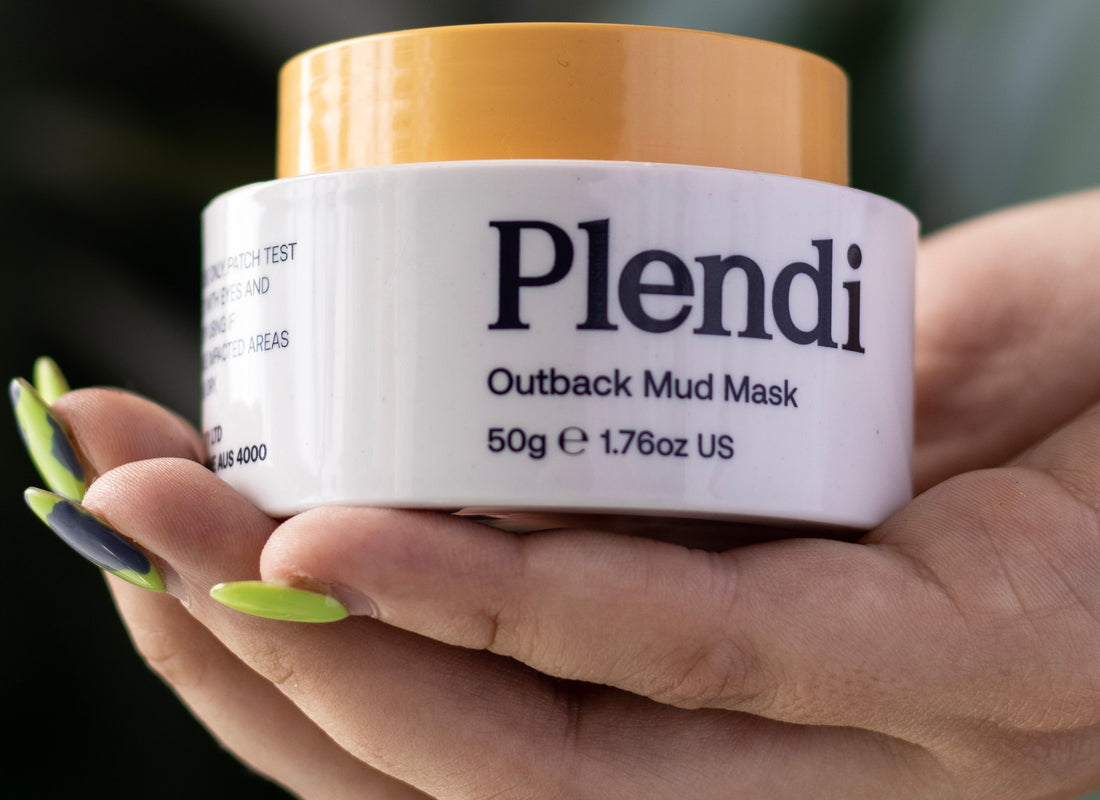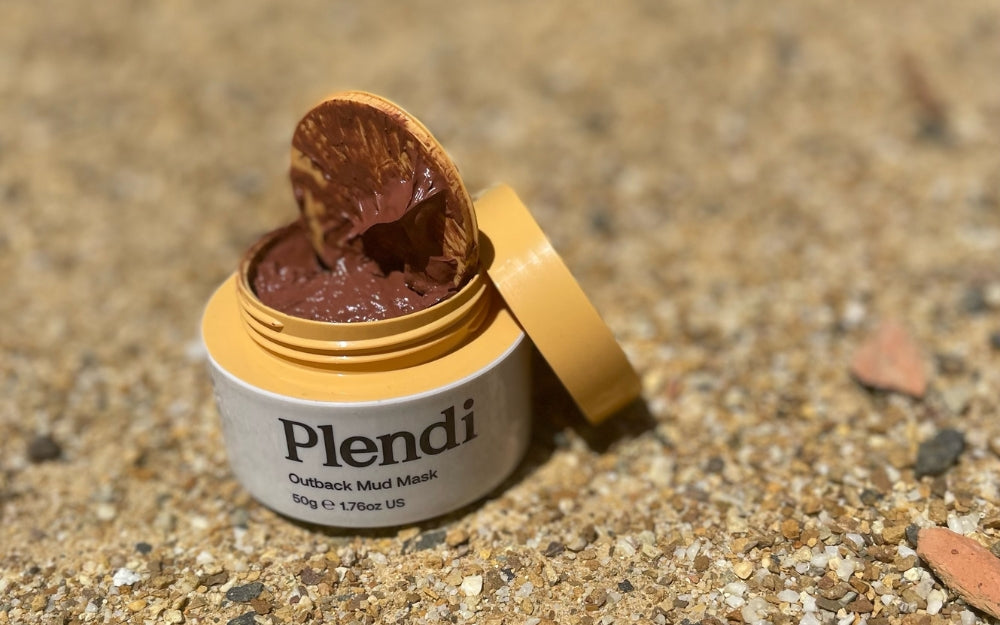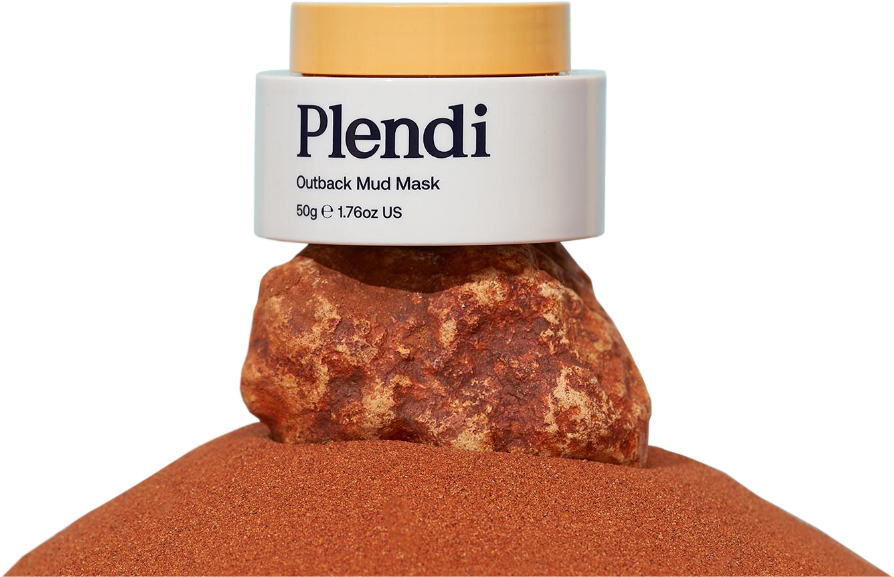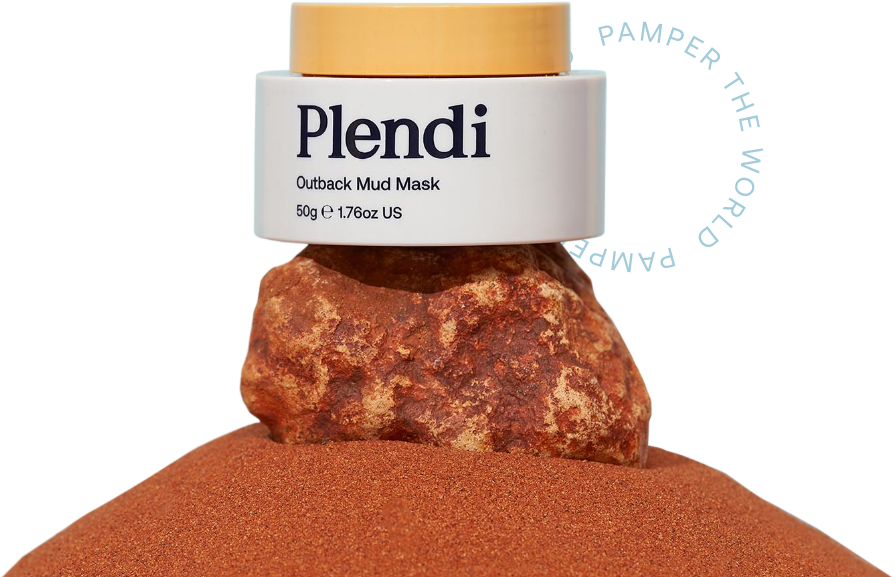We are confident that our Outback Mud Mask is safe for your skin. It is one of the few clay masks globally that has been clinically tested, dermatologist approved to be hypoallergenic and suitable for sensitive skin. And we’ve received a naturality assessment to ISO 16128 standards to confirm that we’ve formulated the mask from 99.69% totally naturally derived ingredients to boot!
So, with that in mind, let’s take a deeper look at why clay masks, the Outback Mud Mask included, may sometimes cause skin redness when used.
The facts.
Since ancient times, clay masks have been popular for their ability to draw impurities and excess oil from the skin, leaving it feeling clean and refreshed. It has been rumoured that both Cleopatra and Helen of Troy have clay face masks to thank for their enhanced beauty (don’t believe us? Just Google it…).
However, some people may experience redness, irritation, or dryness after using a clay mask, while others do not. But intermittently. You may use a mask today and experience redness after use, but no redness or irritation when using the same clay mask again next time.
There are several factors that can contribute to this variability, so let’s take a deeper look.
The clay-effect.
Most clay face masks contain one or more types of clay, such as kaolin, bentonite, or French green clay. These clays have a high absorption capacity, able to bind to impurities and excess oil in the skin. When a clay mask is applied to the skin, it typically dries and tightens as it draws out impurities, which can cause a pulling sensation on the skin.
The type and concentration of clay used in a formula significantly contributes to the redness factor. Some clays, such as bentonite, are more absorbent and can be more drying on the skin, while others, like kaolin, are gentler and more suitable for sensitive skin.
Some brands add a significant concentration of these clays in their face masks (because it is a rather inexpensive ingredient compared to other ingredients). Because of the high concentration of clay, these masks will dry to a crack that resembles a parched desert landscape after a few minutes. Instead of rinsing this mask off, you could simply peel off the flakes!
Unfortunately, this drying effect is transferred to your skin, and instead of conditioning your skin, your skin is stripped bare of moisture that leaves your skin extremely dehydrated. Your skin will react to this harsh treatment with redness and irritation…
You can easily spot these masks – their textures are rather putty-like and they may have an extremely thick, gooey texture. They may also turn rock solid in the jar after a few weeks once opened.
It's sometimes called cutaneous vasodilation.
When a clay mask is applied to the skin, it begins to dry and tighten, which can cause a mild pulling sensation on the skin. This physical sensation, combined with the absorption properties of the clay, can trigger the release of histamine, a chemical that causes blood vessels to dilate and increases blood flow to the skin. In addition, as moisture evaporates from the face mask, heat is generated. This process can also draw additional blood to the skin’s surface.
Although the increase in blood flow can help to deliver nutrients and oxygen to the skin, promoting healing and a healthy complexion, there is another theory: That cutaneous vasodilation is your skin’s fight-or-flight reaction to treatment it considers harsh, in an attempt to flush out the harmful substances. Why? Well, as the saying goes, too much of a good thing isn’t good anymore…
In some individuals, this process may result in a mild redness that typically subsides within 15 minutes. In others, it may appear as red-hot inflammation of the skin, lasting for much longer than 30 minutes and often accompanied by a burning, irritating experience.
So, what can cause this? Scientific research on this topic seems sparse, but four common factors that may contribute to, or exacerbate this redness effect are:
- Dehydration. Your skin is already dehydrated when you apply the mask. The clay, just doing its job, will extract impurities. But a clay face mask with a high concentration of clays will dehydrate your skin even further, which will contribute to this reddening effect.
- Sensitivities: You may have underlying skin conditions that cause your skin to react to the clay mask or some of the other ingredients (especially synthetic fragrances or harsh preservatives).
- Duration: You are leaving the mask on for too long, or you’ve applied it too thick and therefore, the clay ends up absorbing essential moisture from your skin which affects critical hydration levels.
- Friction: You wipe the clay off with a cloth instead of rinsing it off with water. Some clay masks require a fair bit of effort to wipe the hardened clay from your skin without using excessive pressure, which in turn irritates the skin. In addition, the excessive friction can cause micro-lacerations with the clay particles disturbing your skin barrier. Causing the skin to react. With redness.
The Outback Mud Mask difference.

We have formulated the mask to be kind to skin, and under proper usage conditions, it should not cause redness or irritation:
- The Outback Mud Mask has been formulated with an extremely mild blend of both kaolin and bentonite clays in low dosage. Clay is not our hero ingredient as cleansing is not the Outback Mud Mask’s primary function. While the clays play a support act to purge the pores of built-up impurities like dirt and bacteria and absorb excess oil, we supplement it with several awesome ingredients to condition and nurture your skin and infuse it with moisture rather than strip it bare.
- We included aloe vera, hydrolyzed jojoba esters, kakadu plum extract and kangaroo paw extract as desensitising agents to sooth and calm your skin and provide anti-inflammatory support.
- We included safflower oil, sweet almond oil, macadamia oil and glycerine to lock in moisture and combat the dehydrating effect of the clays.
- Our mask is smooth and light and glides onto the skin without causing irritation. It also rinses off easily without causing friction.
- Our mask will not dry to a crack. It will settle nicely to do its thing without disturbing your skin’s barrier.
A clay-based face mask is an essential skincare component in your skincare routine. And the Outback Mud Mask has been clinically proven to cleanse, condition and nourish your skin. Don’t believe us? Let our consumer reviews do the talking.
Final words.
There’s always a “but” at the end of any good sentence… Even if you take care to use a face mask appropriately, it is possible that underlying skin conditions or sensitivities to ingredients in the mask can trigger skin redness and irritation. Be a responsible masker and always abide by these 6 rules:
RULE 1: Patch test any new skincare product before applying it to sensitive skin areas, especially your face.
RULE 2: Do not leave it on for too long. A 10-minute routine 2 – 3 times a week should suffice. Alternatively, use the Outback Mud Mask as a daily shower cleanser-conditioner for as little as 1-minute per day to see the difference.
RULE 3: Apply the mask to damp skin to avoid unnecessary moisture loss.
RULE 4: Apply the mask with your fingers, so you can control the pressure and friction caused. With a brush or spatula, you may overdo it. Besides, its more fun applying the Outback Mud Mask with your fingers and let the tiny jojoba esters work their magic - on your fingertips and face it will stimulate circulation and will help to exfoliate dead skin cells too.
RULE 5: Rinse the mask off with water. Never rub it off with a towel or cloth.
If any skincare product irritates or stings when using, your skin is telling you to stop. Rinse it off immediately and seek medical care if needed.
Get your natural skincare Outback Mud Mask for all skin types here.





